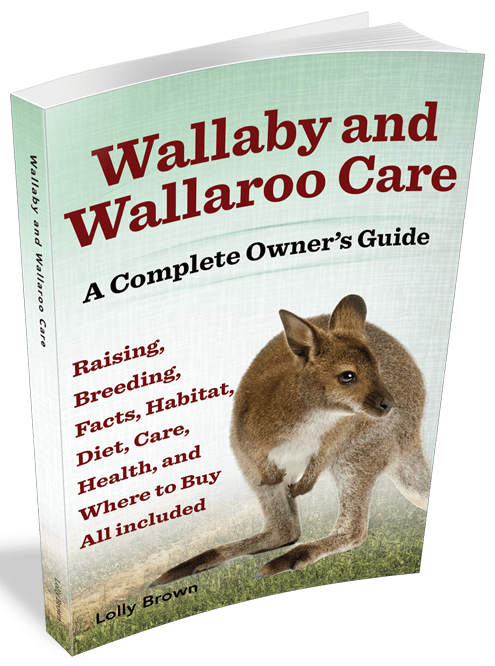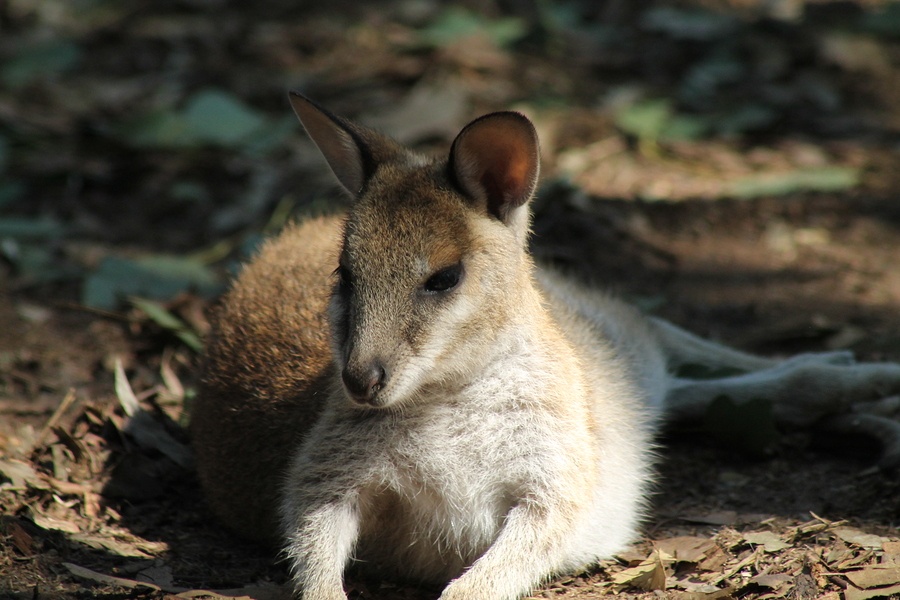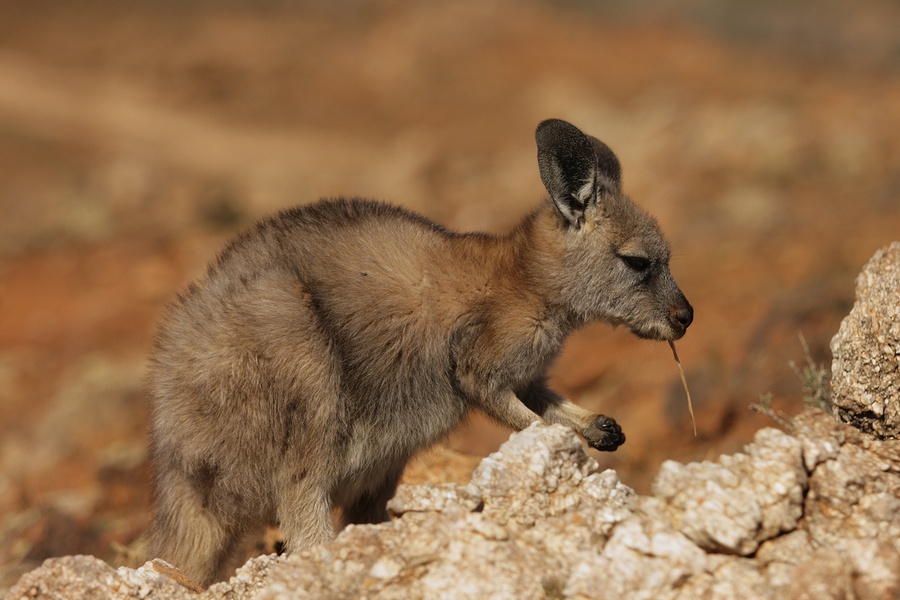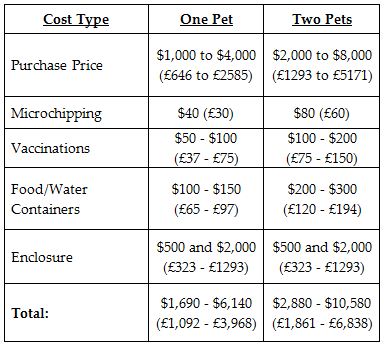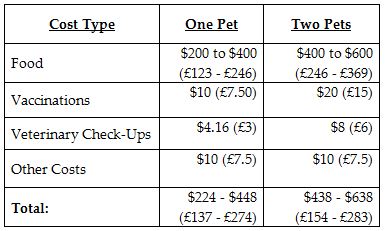Chapters
Navigate to chapter
► Chapter 1: Understanding Wallabies and Wallaroos
► Chapter 2: What to Know Before You Buy
► Chapter 3: Purchasing Wallabies and Wallaroos
► Chapter 4: Caring for Wallabies and Wallaroos
► Chapter 5: Breeding Wallabies and Wallaroos
► Chapter 6: Healthy Wallabies and Wallaroos
► Chapter 7: Wallaby and Wallaroo Care Sheet
► Chapter 8: Additional Tips and Information
Chapter 1: Understanding Wallabies and Wallaroos
Wallabies and wallaroos are marsupials in the family Macropodidae. This group of “macropods,” a name literally meaning “large foot,” also includes kangaroos, tree-kangaroos and pademelons.
Macropods as a group are native to Australia, New Guinea, and the neighboring islands. Prior to the European settlement of Australia, there were more than 50 different species of macropods.
Six species have now become extinct, and an additional 11 have greatly dropped in population density due to habitat loss, climate change, and predation among other factors.
1) Wallaby vs. Wallaroo
The term “wallaby” does not refer to a particular species. Rather, it is a categorization used to define a number of macropods of moderate size. There are about thirty different species that fall into the “wallaby” category and they are differentiated into groups including:
- Typical Wallabies – genus Macropus, most closely related to kangaroosand Wallaroos
- Pademelons – forest-dwelling wallabies, genus Thylogale
- Rock-Wallabies – genus Petrogale
- Banded Hare-Wallaby – Lagostrophus fasciatus
The most general difference between wallaroos and wallabies is their size. Wallabies are typically small to medium-sized with thick-set bodies. Wallaroos are only slightly smaller than kangaroos, but also have thick-set bodies.
Both animals exhibit a similar upright stance with tucked elbows and bent wrists as well as large hind feet.
More significant differences can be seen between wallaroos and the various types of wallaby. Rock-wallabies, for example, tend to live on rugged terrain, using their rough feet to grip the rock.
Pademelons are typically found in forested regions and are some of the smallest marsupials on Earth. They have similar body structure to the wallaroo, but with shorter, thicker tails that are sparsely haired.
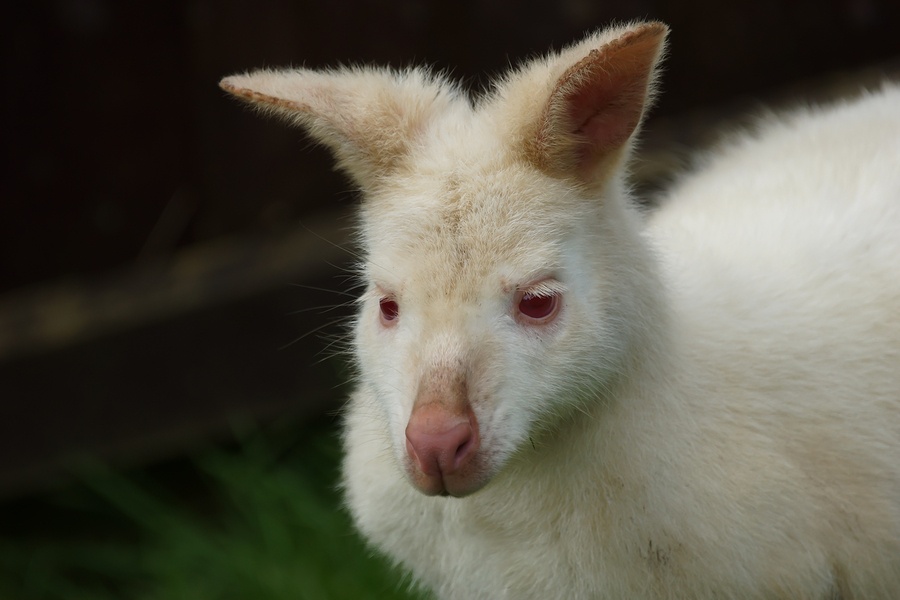
Consequently, the list of “types” of wallabies is quite long:
Agile wallaby, Macropus agilis
Allied rock-wallaby, Petrogale assimilis
Banded hare-wallaby, Lagostrophus fasciatus
Black dorcopsis, Dorcopsis atrata
Black-flanked rock-wallaby, Petrogale lateralis
Black-striped wallaby, Macropus dorsalis
Bridled nail-tail wallaby, Onychogalea fraenata
Brown dorcopsis, Dorcopsis muelleri
Brown’s pademelon, Thylogale browni
Brush-tailed rock-wallaby, Petrogale penicillata
Calaby’s pademelon, Thylogale calabyi
Cape York rock-wallaby, Petrogale coenensis
Crescent nail-tail wallaby, Onychogalea lunata (extinct)
Dusky pademelon, Thylogale brunii
Eastern hare-wallaby, Lagorchestes leporides (extinct)
Godman’s rock-wallaby, Petrogale godmani
Gray dorcopsis, Dorcopsis luctuosa
Herbert’s rock-wallaby, Petrogale herberti
Macleay’s dorcopsis, Dorcopsulus macleayi
Mareeba rock-wallaby, Petrogale mareeba
Monjon, Petrogale burbidgei
Mt. Claro rock-wallaby, Petrogale sharmani
Mountain pademelon, Thylogale lanatus
Nabarlek, Petrogale concinna
Northern nail-tail wallaby, Onychogalea unguifera
Parma wallaby, Macropus parma (rediscovered, thought extinct for 100 years)
Proserpine rock-wallaby, Petrogale persephone
Purple-necked rock-wallaby, Petrogale purpureicollis
Red-legged pademelon, Thylogale stigmatica
Red-necked pademelon, Thylogale thetis
Red-necked wallaby, Macropus rufogriseus
Rothschild’s rock-wallaby, Petrogale rothschildi
Rufous hare-wallaby, Lagorchestes hirsutus
Short-eared rock-wallaby, Petrogale brachyotis
Swamp wallaby or Black Wallaby, Wallabia bicolor
Tammar wallaby, Macropus eugenii
Tasmanian pademelon, Thylogale billardierii
Toolache wallaby, Macropus greyii (extinct)
Unadorned rock-wallaby, Petrogale inornata
Western brush wallaby, Macropus irma
Whiptail wallaby, Macropus parryi
White-striped dorcopsis, Dorcopsis hageni
Yellow-footed rock-wallaby, Petrogale xanthopus
The Bennett’s or Red Necked Wallaby, indigenous to Tasmania and mainland Australia, is the type most typically kept as a pet.
These animals grow to a size of 35-60 lbs. / 16-27 kg and stand 2-3 feet / 0.6-0.9 meters tall when fully grown. Their lifespan is 10-15 years, but some individuals in captivity have reached 19-20 years of age. They are reasonably hardy in colder climates and come in both grey and albino varieties.
This text will use the term “wallaby” in a somewhat generalized fashion with the assumption that you will be caring for an animal like the Bennett’s Wallaby.
2) Understanding Wallaroos
The name “wallaroo” is actually a portmanteau of “kangaroo” and “wallaby,” though native Australians generally do not use this name. The greatest distinguishing feature in all of these animals is size.
If you were to use the terms in ascending order from smallest to largest you would have:
- wallaby
- wallaroo
- kangaroo
In Australia, large, slim-bodied macropods are referred to as kangaroos while smaller, thick-set species are called wallabies. Therefore, in its native land, the wallaroo is just a little smaller than a kangaroo.
There are three major species of wallaroo, all typically found in open country, and a number of sub-species. All share similar characteristics with their kangaroo and wallaby relatives.
Wallaroos, like kangaroos and wallabies, are known for their upright stance with wrists raised and tucked elbows. They move by hopping with their large hind feet, balancing with their long tails.
Though wallaroos are wild animals, they are becoming more popular as pets, with more professional breeders offering animals for sale. In Australia, it is not uncommon for individuals to rescue orphaned wallaroo babies and to raise them by hand.
Wallaroos are not just cute and cuddly as pets, they are also very affectionate and entertaining to have around.
3) Types of Wallaroos
There are three major species of Wallaroo:
- Common Wallaroo(Macropus robustus)
- Black Wallaroo(Macropus bernardus)
- Antilopine Wallaroo(Macropus antilopinus)
The Common Wallaroo is also sometimes referred to as the Hill Kangaroo or the Hill Wallaroo. There are four subspecies of Common Wallaroo found in various parts of Australia excluding Tasmania.
a.) Common Wallaroo (Macropus robustus)
The four subspecies of Macropus robustus are categorized based on differences in color, size and genetics.
- Macropusrobustus robustus (Eastern Wallaroo)
- Macropusrobustus erubescens (Euro)
- Macropusrobustus woodwardi (Northern Wallaroo)
- Macropusrobustus isabellinus (Barrow Island Euro)
The Barrow Island Euro is the most distinctive of the four subspecies, having a smaller and stockier build. These wallaroos may reach only half the size of other species. The Eastern wallaroo and the Euro are the most similar. In fact, they are thought to hybridize naturally in the wild.
The natural range of the Common Wallaroo includes most regions of Australia including Cape York Peninsula, Central Australia, Hodgson and Victoria. They are found in a variety of habitats including extremely arid regions where annual rainfall is less than 15 inches (380 mm).
Common Wallaroos tend to prefer areas that offer large rocks for shade, though they can also be found in sparsely vegetated areas. This is one of the largest species of wallaroo, with males reaching almost twice the size as females.
At maturity, male Common Wallaroos weigh as much as 78 lbs. (35 kg) while females are just 33 lbs. (15 kg).
Males are 45 to 78 inches (114 to 200 cm) long, with an additional tail length of 21 to 35 inches (53 to 89 cm).
Females are 44 to 60 inches (112 to 152 cm) long with a tail length of 21 to 29 inches (53 to 74 inches).
Common Wallaroos have darker, less dense fur than other macropods. The ventral side is typically dark grey with white, sparse fur on the underside. Their bare noses are black, with equally dark coloration at the back of the ears.
The lips, base, and inside of the ears, however, are pale or white. The legs and tail vary slightly in color from the body, being dark brown and bleeding to black near the tips.
Common Wallaroos are opportunistic breeders and generally do not exhibit any kind of seasonal pattern for mating.
Females reach sexual maturity at around 18 months while males may not be fully mature until 22 months of age.
When conditions are good, females often have one joey attached to the teat and another either in the pouch or out of the pouch but still nursing.
The gestation period is about 34 days, and the time a joey spends in the pouch ranges from 237 to 269 days.
The average lifespan of the Common Wallaroo in the wild is 18.5 years, while the captive lifespan can be a whole year longer. The key to their longevity is the fact that these wallaroos are well adapted to survival in dry environments.
In their native habitat, temperatures can exceed 120°F (49°C) but Common Wallaroos have several means of thermo-regulating their bodies to survive. In excessive heat, they pant. They may also dig a hole in the ground to keep cool.
b.) Black Wallaroo (Macropus bernardus)
The Black Wallaroo is found within a limited area on the western edge of Arnhem Land, in northern Australia. They are typically found in closed forests, Eucalyptus forests, or open grasslands. They tend to prefer habitats with large boulders to provide cover.
Males are generally sooty brown or black in color while females are dark brown or grey. Black Wallaroos are the smallest species of wallaroo and the smallest in the kangaroo family.
These animals range in size from 28 to 48 lbs. (13 to 22 kg) and have a have a length from 2.6 to 3.3 feet (0.8 to 1 meter). Black Wallaroo about 2/3 the size of Common Wallaroos, and have shorter ears.
Black Wallaroos can breed throughout the year as long as conditions remain optimal. Gestation lasts between 31-36 days with the young remaining exclusively in the pouch for about 4 months.
Though all wallaroos tend to be somewhat solitary, the Black Wallaroo is rarely found in groups consisting of more than three individuals. These groups often include a male, a female and a large joey.
When two males encounter each other, they may exhibit aggressive behavior, walking stiff legged, pulling on grass, or straining to exaggerate their height. These confrontations tend to end quickly and generally do not lead to injury.
Black Wallaroos are one of the least studied species in the kangaroo family because they are incredibly shy. When approached, they tend to flee until they are out of eyesight.
What is known about this species is that they spend 7 to 14 hours a day grazing and are most active at dawn and at dusk. They use camouflage to hide from predators including eagles, dingoes, crocodiles, foxes, and humans.
There are currently several conservation efforts in place to preserve the Black Wallaroo species. A large part of their natural habitat is located in Kakadu National Park in Australia, which is already protected.
c.) Antilopine Wallaroo (Macropus antilopinus)
The Antilopine Wallaroo lives in the savanna woodlands in the northern and tropical regions of Australia. Their native habitat ranges from Kimberley to the Gulf of Carpentaria, though they are also found in the Cape York Peninsula.
These wallaroos spend their days resting in shaded areas, coming out at dusk to graze. During the wet season, they may also graze during the day when the weather is cool, but will return to shelter during periods of heavy rain.
Antilopine Wallaroos are one of the most sexually dimorphic of the wallaroo species. Males exhibit a reddish tan color while females are brown with grey heads and shoulders. Females also have white tips on the back of their ears.
Both sexes have white feet and paws tipped in black. Males have a swelling above their nostrils which is believed to help keep them cool.
In terms of size, male Antilopine Wallaroos can reach up to 150 lbs. (70 kg) while females range from 30-65 lbs. (15-30 kg). The average length is 5-6 ft. (1.5-1.9 m).
Though little information is available regarding the lifespan of the Antilopine Wallaroo in the wild, the longest recorded survival in captivity is 16 years.
Unlike other species, the Antilopine Wallaroo breeds once per year, generally starting in December near the beginning of the wet season.
While females of the species become sexually mature around 16 months (and develop their pouch after 20 months), males do not mature for closer to 2 years.
Once conception occurs, the gestation period lasts about 35 days. Only one joey is born per breeding season and it develops inside the pouch for about 20 weeks.
After 6 months, the joey emerges, but continues to nurse until about 15 months of age. Once the joey reaches the mother’s pouch, the males lose interest and join male-only groups. Females remain together with their young.
Antilopine Wallaroos are more social than other species. Joeys tend to stay near their mothers even into adulthood, resting together and grooming each other.
Older males are more solitary, but younger males often form “bachelor groups,” while females form larger groups with their young. These groups move annually between regular grazing grounds.
4) What About The Kangaroo?
The kangaroo is the largest species in the Macropodidae family and it is endemic to Australia. The kangaroo appears on the national coat of arms, and on some of the currency. Its likeness is rife in popular culture, and is the “image” of all things Australian for the rest of the world.
Keeping kangaroos as pets, however, is a somewhat difficult matter due to their vastly larger size. Wallabies, wallaroos, and kangaroos all have very similar body structure, but some species of kangaroos can reach a maximum weight of 200 lbs. (90 kg).
Kangaroos move by hopping with their powerful hind legs and they are capable of reaching speeds up to 44 mph (70 km/h). When moving at slower speeds, the kangaroo often uses its tail and forelimbs as a tripod, raising its hind legs forward.
You may be surprised to hear that kangaroos are also very good swimmers – they often escape into the water when pursued by predators.
Kangaroo have a chambered stomach like that of a cow or sheep. In a similar way to livestock, they regurgitate food that has already been consumed and continue to chew it, breaking it down further for easier digestion.
This action, known as “chewing their cud,” helps to give kangaroos their oddly matter-of-fact expression. It’s quite common for a roo to stand up and stare with a rather benign, bored look that only compliments its whimsical charm.
All kangaroos are herbivores, though some subsist exclusively on grasses while others also eat some shrubs. If you do not have a rural setting for them to graze and range, they are extremely difficult pets to keep.
Certainly wallabies and wallaroos after one year of age do not qualify as house pets, but their smaller size makes them more manageable as companions than their larger cousins.
Chapter 2: What to Know Before You Buy
Wallabies and wallaroos are not typical household pets. These animals have a variety of specific needs in regard to housing and diet.
Before you go out and purchase either species, you must be certain that you can provide an appropriate home, and that you understand the pros and cons of becoming a macropod owner.
1.) Do You Need a License?
Both wallabies and wallaroos are considered exotic animals and may be subject to laws governing their import, export, and keeping.
It is imperative that you research all potential legal ramifications before your purchase your pet. Failure to do so will not only subject you to fines, but may result in the seizure of the unfortunate and innocent animal.
a.) Licensing in the U.S.
In the United States, the definition of the term “exotic” is ever-changing. Traditionally, “exotic” refers to an animal that is neither native nor indigenous to the owner’s locale. Legally, however, the term may be defined differently from one jurisdiction to another.
The federal government defines an exotic animal as “an animal that is native to a foreign country or of foreign origin or character, is not native to the United States, or was introduced from abroad.”
Licensing requirements vary greatly from one state to another. Many states have laws forbidding the possession of exotic animals, while others simply require a license – some have no licensing or permit requirements at all.
Overview of State Exotic Animal Laws:
At the time of this writing, late in 2013, the following information regarding state law in the United States was accurate. Be advised, however, that the language of these statutes is often convoluted and confusing. It is always best to verify the legal status of any exotic animal BEFORE you purchase your pet.
Most Dangerous Captive Wildlife Banned as Pets
California
Colorado
Georgia
Illinois
Iowa
Kentucky
New Mexico
New Hampshire
New York
New Jersey
Maryland
Oregon
Washington
Utah
Bans Some Species but Allows Others
Arkansas
Kansas
Florida
Maine
Louisiana
Michigan
Minnesota
Montana
Nebraska
Wyoming
Tennessee
Doesn’t Ban Captive Wildlife, Requires Permit for Some
Arizona
Idaho
North Dakota
South Dakota
Oklahoma
Texas
Missouri
Mississippi
Indiana
Pennsylvania
Virginia
Rhode Island
No Regulation or Restriction on Captive Wildlife
Nevada
Wisconsin
Ohio
West Virginia
North Carolina
South Carolina
b.) Licensing in the U.K.
In 1976, the Dangerous Wild Animals Act was enacted in the United Kingdom. This act was passed in reaction to the increasing number of people seeking to keep exotic pets, which tend to be more dangerous than the traditional domestic cat or dog.
The act was also designed to regulate the keeping of hybrids between wild and domestic species. Though neither wallabies nor wallaroos are typically dangerous to humans, they are still considered wild animals and their export, import and keeping is strictly regulated.
Some of the animals specified as “dangerous” by the act include primates, carnivores, large reptiles, spiders and scorpions.
Several species of marsupial, including wallaroos are also included in this list, although in most cases wallabies are allowed.
In order to legally keep these animals in the UK, you must apply for a license and pay a fee. The information on the license and the regulations set forth may vary slightly from one region to another, so be sure to contact your local council regarding specific requirements in your area.
For a full text version of the Dangerous Wild Animals Act 1976, visit: www.legislation.gov.uk/ukpga/1976/38
2.) How Many Should You Buy?
The number of macropods you purchase to keep as pets depends on a variety of factors, the single most important being space. Wallabies and wallaroos are active wild animals in need of adequate exercise. They do not do well when confined to close quarters.
When thinking about multiple macropods, consider both size and personality. Some species are more social than others.
Generally, it is not a good idea to keep a pair of males together unless you have multiple females as well. Your best bet, if you plan to keep more than one macropod, is to keep several small females or several females along with their young.
Keep in mind that as your wallabies or wallaroos grow, you may need to reduce the number you keep or increase the amount of space you use for their enclosure. As young joeys mature, they may come into competition with each other if they are male.
There is no specific formula for keeping multiple macropods together – it largely depends on the socialization and the individual temperaments of the animals.
If you plan to keep more than one macropod in the same enclosure, make sure the area is large enough that each animal has its own space. Carefully observe the animals at all times to make sure they are getting along.
3.) Can Macropods Be Kept with Other Pets?
The answer to this question varies from one animal to another depending on the wallaby or wallaroo’s temperament. Some smaller wallabies may see other pets like dogs and large cats as threats, while larger wallaroos may have no trouble getting along with Fido and Fluffy.
It is best to keep young joeys away from other pets but adults can be compatible with domesticated animals as long as you supervise their interaction.
It is never a good idea to leave your macropods alone with other pets because you never know how the animals will react to one another – it is always better to be safe than sorry.
Young joeys could be severely injured by a family dog that is simply over-excited. Wallabies, wallaroos, and kangaroos should NOT be kept with cats.
The macropods can become infected with the protozoan that causes toxoplasmosis, which may be present in the feces of cats even if the cat itself shows no symptoms. This disease is fatal to joeys of all macropod species.
4.) Ease and Cost of Care
Because of their energy and overall friendly natures, both wallabies and wallaroos are a pleasure to keep as pets, especially when they have been bottle raised. That bonding experience makes them unusually affectionate and loyal with their humans.
Before you purchase a macropod, take the time to make sure that you are able to cover all of the initial costs of purchasing your pet as well as the monthly costs you can expect to pay over the lifetime.
a.) Initial Costs
The initial costs for keeping a wallaby or wallaroo will include the actual cost of the animal as well as the necessary accessories and veterinary procedures.
Purchase Price – Prices for both wallabies and wallaroos vary greatly depending where you purchase them. Because both are still fairly rare as pets, there aren’t a large number of breeders and prices are quite high – usually between $1,000 and $4,000 (£646 to £2585).
Microchipping – It is not a requirement that you have your macropod microchipped, but it is definitely a good idea. In the event that your wallaby or wallaroo gets lost, you stand a much higher chance of being reunited with him if it has been microchipped. The average cost for this service is around $40 (£30).
Vaccinations – If you purchase a macropod from a reputable breeder, it should already be up to date on its vaccinations.
If it is not, or if you purchase an older animal, you should take it to the veterinarian to have it vaccinated. The cost for this service may vary between $50 and $100 (£37 to £75).
Food/Water Containers – In order to feed macropods, you will need a free standing or wall mounted hay rack as well as a dry trough for food. Additionally, you will need several containers for fresh water.
The cost for these items may range from $100 to $150 (£65 – £97). Don’t neglect to factor in multiple feeders if you have more than one pet, or if you are providing both indoor and outdoor feeding options.
Enclosure – The cost of your macropod enclosure will depend on a number of factors including size, quality of materials, type of bedding, and included furnishings.
The range for enclosure costs falls between $500 and $2000 (£323 – £1293). Depending on climate, you may be looking at a pen with “lean to” like sleeping accommodations, or a pen with an actual shed or small barn.
Be advised that groups of macropods will sleep together, so all shelters will need to be large enough for all of your pets to bed down together in one big bunch.
Wallabies and wallaroos take rather well to creature comforts, and enjoy large, soft dog beds, which you can scatter around their primary pen or inside their shed.
It’s difficult to put an exact cost estimate on your enclosure since there are so many variables. If you are a do-it-yourself type, you can save a great deal of money on both labor and materials. I recommend going online and looking at photos of wallaby and wallaroo enclosures to get ideas for design and arrangement.
Summary of Initial Costs
b.) Monthly Costs
The monthly costs for keeping a macropod may vary depending on whether you have one or more, the type of food used, and the preferred bedding.
Food – The most important cost you will face on a monthly basis is food. This amount will vary depending on type and quality. For one wallaby or wallaroo, you can expect to pay about $200 to $400 (£123 – £246) per month.
The following products are meant as examples of the types of food you will use with your pets. Please note that prices will differ by locality and availability.
If you feed horse or “pony” cubes, you’ll pay, on average $45-$50 / £25-£31 for 88 lbs. / 40 kgs.
Prices per bale of alfalfa hay will vary by location and amount. It is important that the hay be dry and fresh. If you buy by the bale, expect to pay $225 / £8 per ton (2000 lbs./907 kg).
Kangaroo muesli or mixed food, which is fine for wallabies and wallaroos is priced at $45 / £28 per 77 lbs. / 35 kgs.
Vaccinations – To protect your pet from disease, you should administer vaccines based on your veterinarian’s recommendations. Vaccinations typically cost around $10 (£7.50) per injection.
Veterinary Check-Ups – Typically only an annual visit to the vet will be required. The total cost for this visit should be under $50 (£37.40), which averages to about $4.16 (£3) per month.
Other Costs – Be prepared to cover some extra costs once in a while like replacing enclosure furnishings, cage repairs and other things you may have to purchase on occasion. The average monthly cost for these extra items is around $10 (£7.5).
Summary of Monthly Costs
Pros and Cons of Owning a Wallaby or Wallaroo
One of the major draws of keeping either a wallaby or a wallaroo as a pet is their exotic nature. At the same time, however, that can be considered a drawback.
Pros of Wallabies and Wallaroos as Pets
- If properly socialized, can be very friendly
- Can be trained to follow simple commands
- Commercial diets are available for easy feeding
- Are often very affectionate with humans, form strong bonds
- Unique pets, always entertaining to have around
- Joeys can be hand-raised on formula
- Very gentle by nature, especially if properly socialized around humans
Cons of Wallabies and Wallaroos as Pets
- Depending on species, can grow fairly large
- Can become mischievous, may do some damage if not properly supervised
- Require a significant amount of space– a fenced pen or pasture is necessary
- Can be very expensive to purchaseand keep compared to other pets
- Some speciesare nocturnal, may not be very active during the day
Chapter 3: Purchasing Wallabies and Wallaroos
Purchasing a wallaby or a wallaroo is not as easy as going to your local pet store. You may not be able to find a breeder in your immediate area.
If this is the case, I strongly advise against having a joey shipped to you. It would be far preferable for you to drive to the breeding establishment to pick up the animal.
Young joeys are shy and sensitive by nature. They are extremely susceptible to changes in temperature and humidity, and crave the feeling of security that comes with growing up in their mother’s pouch.
For these and other reasons, many breeders will not even consider shipping the animals, so you may need to factor travel costs into your initial purchase expense.
1.) Buying in the U.S.
In the United States, in order to obtain legal animals that have been raised in good circumstances, contact dealers online.
One of the best providers of wallaroos in the U.S. is Schreiner Farms of Dallesport, Washington. (The ranch also breeds and sells cattle, ostrich, camel, zebra, and other exotic animals.)
Schreiner Farms
www.schreinerfarms.com
Buffalo Hill Exotics in Centralia, Illinois raises both Bennett’s and Dama wallabies in addition to miniature horses, red kangaroos, miniature zebra, cattle, buffalo, Bactrian camels, and miniature long-haired dachshunds.
Buffalo Hill Exotics
www.buffalohillexotics.com
Valley Stables Exotics of Berea, Kentucky offers Bennett’s Wallabies in addition to African Serval Cats, African Caracal Lynx, miniature llamas, and a range of other animals.
Valley Stables Exotics
www.valleystables-exotics.com
The Fall City Wallaby Ranch located in Fall City, Washington also offers Red Kangaroos in addition to Grey and Albino Bennett’s Wallabies.
Fall City Wallaby Ranch
www.wallabyranch.org
2.) Buying in the U.K.
Because the keeping of wallaroos and potentially wallabies is heavily regulated in the U.K. it may be tricky to find one for purchase. To begin your search try:
Wallabies and Wabbits
www.wallabiesandwabbits.co.uk
3.) How to Select a Healthy Wallaroo
The last thing you want is to go through the trouble to find a quality macropod breeder only to bring your pet home and discover it is suffering from a health problem.
Some of the things to look for in a healthy macropod:
- Eyes are bright and alert
- No visible signs of injuryor illness
- Fluid movements, not limping or dragging limbs
- Even temperament, seems well socialized
- Not afraid of humans
- No discharge from the eyes, noseor mouth
- Healthy appetite, not refusing food
- No signs of diarrheain the pen
- Coat is in good condition, not rough or patchy
Want to read the entire thing?
